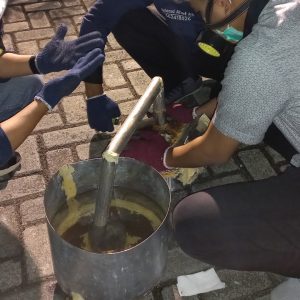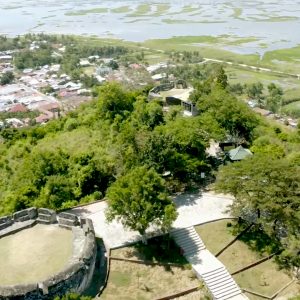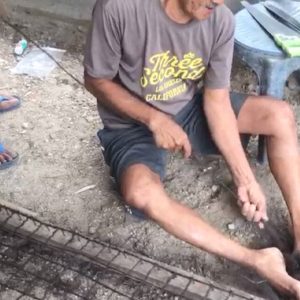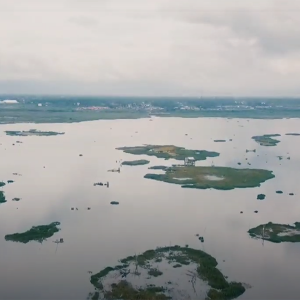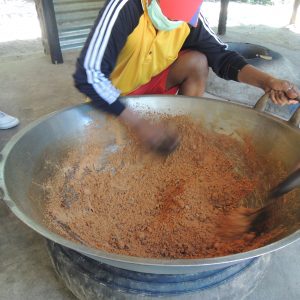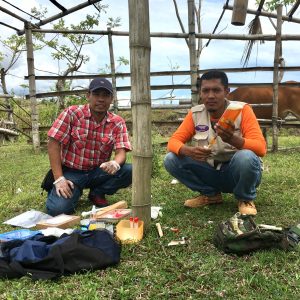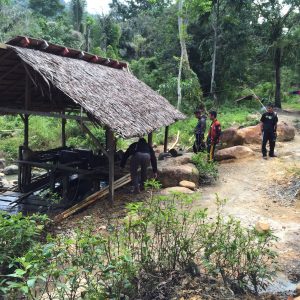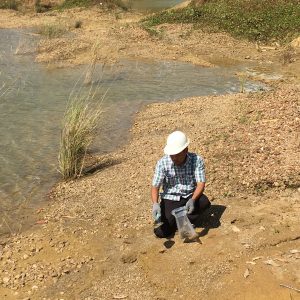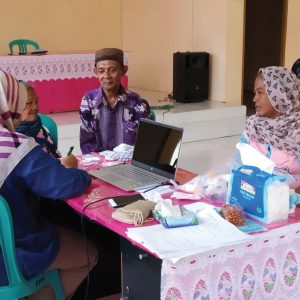We set up a team comprised of our SRIREP project members, researchers, and junior research students from the State University of Gorontalo (UNG). This group has been working for a prototype device that can be used to securely burn mercury-gold amalgam and recover without releasing mercury vapor into the atmosphere.
Category: <span>Research Activities</span>
Aspiring Geopark Gorontalo
This video, titled "Aspiring Geopark Gorontalo," explains how various stakeholders and scientists are working together as a Community of Practice (COP) to learn and discuss scientific knowledge and indigenous knowledge about nature and culture at potential Geopark sites in Gorontalo Province in order to establish the Gorontalo Geopark. Geoparks could be one of the sustainable eco-tourism options that can provide job possibilities and opportunities for people to live a more sustainable lifestyle. Despite the fact that the pandemic Covid-19 crisis is still ongoing, we are working together to find a better solution to advance our Geopark activities.
Activities of the Natural Fiber Research Group; Process of making sugar palm fiber nets
This is the summary of the process of making sugar palm fiber nets. We are currently collaborating with local people of Bone Bolango Regency who have indigenous knowledge (such as the knowledge of creating a traditional net with the fibers of the sugar palm stalks around them), officers of the local government (Bone Bolango Regency), the researchers of SRIREP and State University of Gorontalo, and the private sector such as ESPECMIC Co., Lt. in order to develop a sustainable new industry which will also help to reduce the poverty problem. Currently, in West Tulabolo Village, the villagers, including those who work in the mine, have started the Moopiya Group, and work together with us to manufacture goods using the Sugar Palm.
Problems of the Limboto Lake
Due to the alarming condition of natural disasters and environmental pollution of Limboto Lake, the researchers of SRIREP Project led by the project leader, Professor Masayuki Sakakibara together with the researchers of the State University of Gorontalo are collaborating with Gorontalo Provincial Government to do more cooperate research in order to make the future potentials of surrounding inhabitants.
Health Assessment Studies
In February 2020, SRIREP Project conducted the first preliminary clinical survey of the ASGM community of Myanmar in collaboration with Environmental Conservation Department (ECD), Ministry of Natural Resources and Environmental Conservation (Myanmar) in order to evaluate the health condition of the community especially the Hg intoxication.
Transdisciplinary Practical Research
Mining workers need alternative job opportunities to quite out from the economic trap of the ASGM sector while simultaneously reduce the negative effects of mercury pollution. The stakeholder assessment indicated that the Bombana Health Department, the Bombana Environment Agency, and local leaders were stakeholders who would support the mercury emission reduction program.
Environmental Impact Assessments Studies
Although some contamination originated from natural geological sources, anthropogenic activities such as mining industries are also the main contributors to environmental damage and toxic metal pollution. The food chain, especially livestock tend to bioaccumulate mercury (Hg) in their bodies.
Transdisciplinary Practical Research
One of our studies includes atmospheric Hg contamination which is focusing on the level of atmospheric Hg contamination the air, water, soil, and living organisms, including trees in an artisanal and small-scale gold mining (ASGM) area.
Environmental Impact Assessments Studies
Mercury (Hg) contamination in soil and forage plants is toxic to ecosystems and artisanal and small-scale gold mining (ASGM) is the main source of such pollution in the Bombana area of Indonesia. Hg contamination in soil and forage plants was investigated by particle-induced X-ray emission analysis of samples collected from three savannah areas
Health Assessment Studies
The evaluation of mercury impact on humans is necessary especially for the communities living in or near ASGM areas. The early diagnosis of mercury toxicity is one of the most important monitoring parameters to prevent the effects of mercury-intoxication

